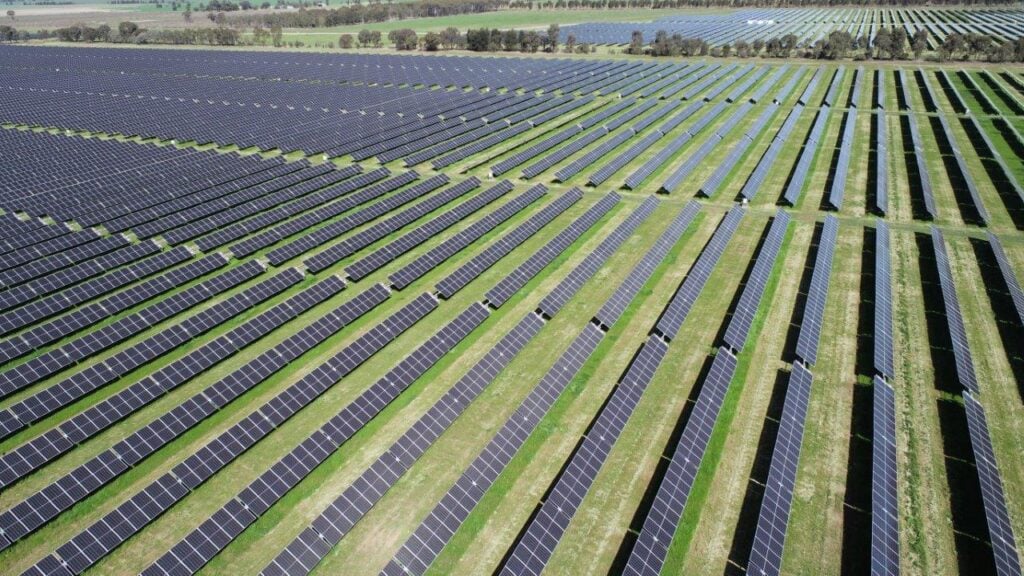
Registrations for Tender 4 of Australia’s Capacity Investment Scheme (CIS) opened yesterday (28 November). The scheme seeks to deliver 6GW of renewable energy capacity to the National Electricity Market (NEM).
The fourth tender round is expected to open for Stage A project bids on 13 December 2024 and will close on 11 February 2025.
Try Premium for just $1
- Full premium access for the first month at only $1
- Converts to an annual rate after 30 days unless cancelled
- Cancel anytime during the trial period
Premium Benefits
- Expert industry analysis and interviews
- Digital access to PV Tech Power journal
- Exclusive event discounts
Or get the full Premium subscription right away
Or continue reading this article for free
Stage A of Tender 4 will be marked against five merit criteria: the project’s contribution to system reliability and benefits, project deliverability and timetable, organisational capability to deliver the project, First Nations engagement and community engagement.
Stage B, on the other hand, will be marked against four merit criteria: the project’s financial value and system benefits, commercial departures, First Nations commitments and social licence commitments.
Of the 6GW of renewable energy generation that has been allocated, New South Wales has secured the most with 2.2GW. This is closely followed by Victoria with 1.4GW, whilst Tasmania and South Australia have been granted 300MW each. This means 1.8GW has been unallocated, and Queensland-based projects will bid for this capacity.
Matt Brine, head of office of the CIS at the Department of Climate Change, Energy, the Environment and Water (DCCEEW), revealed in a recent webinar that Queensland had been granted no capacity due to the recent election in the state, which was won by the right-wing Liberal National Party (LNP). Brine said negotiations had not progressed far enough to be settled for the tender.
Tender 4 follows in the footsteps of Tender 3, where the Australia government looked to secure 4GW of dispatchable power and 6GW of renewable energy generation, totalling 10GW. This is an increase on the previous national tender, in which the federal government sought to secure 6GW of total power capacity. The round saw 40GW of bids registered, with 27GW of “very high quality” bids going through to the next stage.
Alongside solar PV generation, the CIS scheme will also seek other technologies such as wind energy, whereas the dispatchable power capacity will be met through energy storage projects.
Negating risks when developing renewable energy projects
The CIS promotes new investments in renewable energy capacity, such as battery storage and solar and wind power generation. This will enable Australia to meet the increasing electricity demand and bridge reliability gaps as old coal power stations phase out of the grid, something that is expected to be achieved on the NEM by 2038.
Recent successful tenders have seen six energy storage projects granted support, totalling 3,626MWh, in Victoria and South Australia. Meanwhile, Western Australia opened its first CIS tender on 22 July, aiming to secure 2GW of clean, dispatchable capacity across the Wholesale Electricity Market (WEM).
Salim Mazouz, head of the Capacity Investment Scheme Branch Office for Policy and Engagement at Chris Bowen’s DCEEW, said the scheme was designed to reduce downside risk for investors in an uncertain market environment.
“Fundamentally, what we found, both for storage and variable renewables, is that there’s a high level of uncertainty currently in the market, including about prices,” Mazouz told our colleagues at Energy-Storage.news Premium in a recent interview.
“We sought to ensure that there is downside risk protection for investors. So, we went in with the design of the CIS to ensure that, for example, debt has more of a chance of being harnessed in the context of these kinds of investments because increasingly, equity holders were finding it difficult to get debt coverage due to … the risk levels.”






